
Southwest Maine doesn’t announce itself with a skyline or a coastal boardwalk. Its character settles in slowly, in the rhythm of two-lane roads that pass through farmsteads, mill villages, and pockets of woods where the cell signal drops. The towns here remain modest in size but layered in history, built around rivers, ponds, and ledges that have shaped how people live and work.
York County’s inland villages, from Limerick to Buxton, grew on farming, timber, and water power, leaving a pattern of dispersed homes and small centers that still feel removed from fast growth on the coast. A short drive west of Portland, the density falls away and you find hamlets with town greens, century-old cemeteries, and camp roads that taper off into trees. Daily life holds a slower edge, with residents balancing trades, small agriculture, and commutes when necessary.
Further inland, Oxford County towns such as Waterford, Stoneham, and Lovell extend that sense of remove. Their geography does most of the filtering—broad valleys, upland forests, and the presence of the White Mountain National Forest. The absence of major corridors means arrival comes by deliberate choice rather than convenience. These are communities where seclusion isn’t an escape so much as the normal condition of living.
To look at this region through twenty-five towns is to see a cross-section of rural Maine that persists outside of coastal tourism. Some places still carry the bones of mills, others lean on farm stands and seasonal rentals, and many keep their distance by design. Each town shows a slightly different version of quiet, whether along the Saco River, beside a kettle lake, or tucked into borderland woods.
25. Limerick – Hilltop Farms and Blue-Hour Stillness
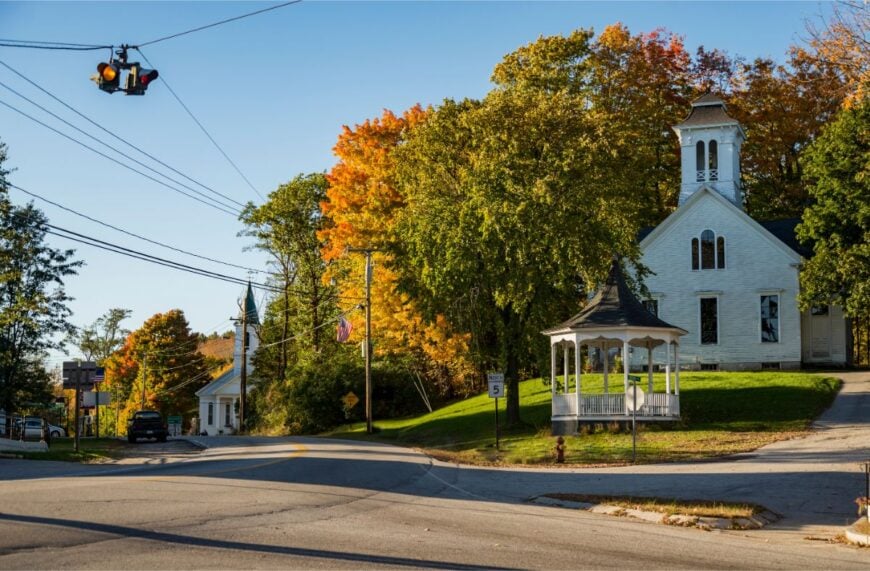
Limerick feels tucked away on its own rise of fields and forests, where old farmhouses look out across long, quiet valleys. The village center is compact—just a handful of historic buildings and a diner that knows everyone by name—while most homes scatter on backroads fringed with stone walls and sugar maples.
Its seclusion comes from the distance to interstates and a web of winding local roads that keep traffic to a whisper. Browse small antique nooks, paddle Sokokis Lake at dawn, walk maple-shaded lanes, or time a visit to a low-key common-green festival.
Agriculture and trades anchor the economy, with many commuting to larger towns only when they must. Nights bring barred owl calls and the soft glow of porch lights through the trees. It’s the kind of place that reminds you how quiet the world can be.
Where is Limerick?

Tucked in northwestern York County, Limerick sits about 35 miles west of Portland. Most visitors arrive via ME-11/ME-5, easing through hills and pastures rather than fast corridors.
Without a nearby interstate, the approach feels deliberately slow. It’s close enough for a day trip, but far enough to feel off the grid.
24. Newfield – Backroad Meadows and Old Mill Ghosts
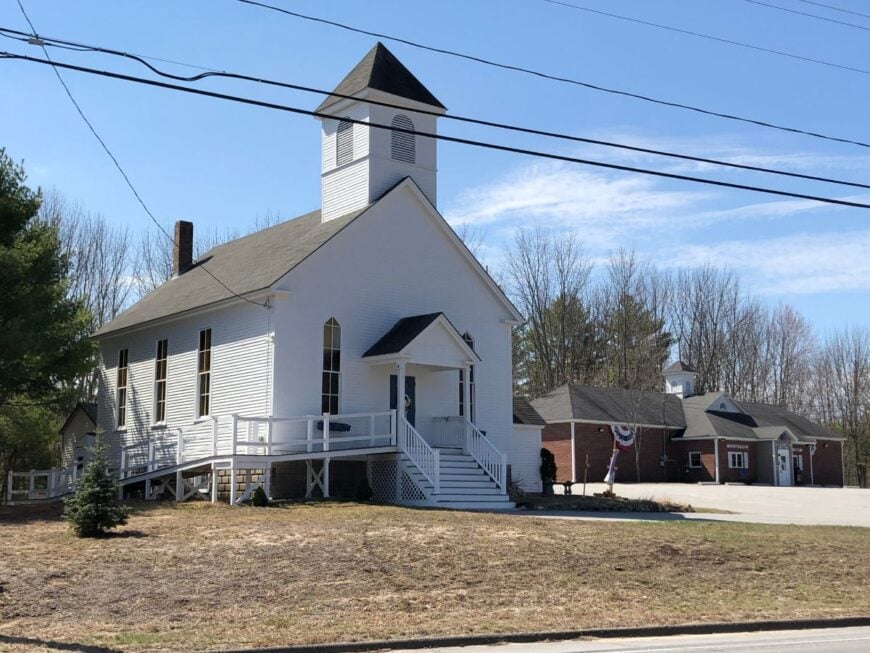
Newfield hides among rolling meadows, cellar holes, and remnants of mill ponds, a rural quilt stitched together by dirt lanes and stone bridges. The village has a sleepy, historical vibe—white churches, weathered barns, and maples that flare crimson in October.
Seclusion comes courtesy of limited through-routes; most drivers never see its prettiest corners. Explore heritage spots in the village, cast a line in Rock Haven Lake, hike forested ridges, or browse roadside farm stands.
Small farms, trades, and retirees share the rhythms of the year here. On still mornings, you can hear the brook before you see it. Newfield feels like a secret handed down rather than found.
Where is Newfield?
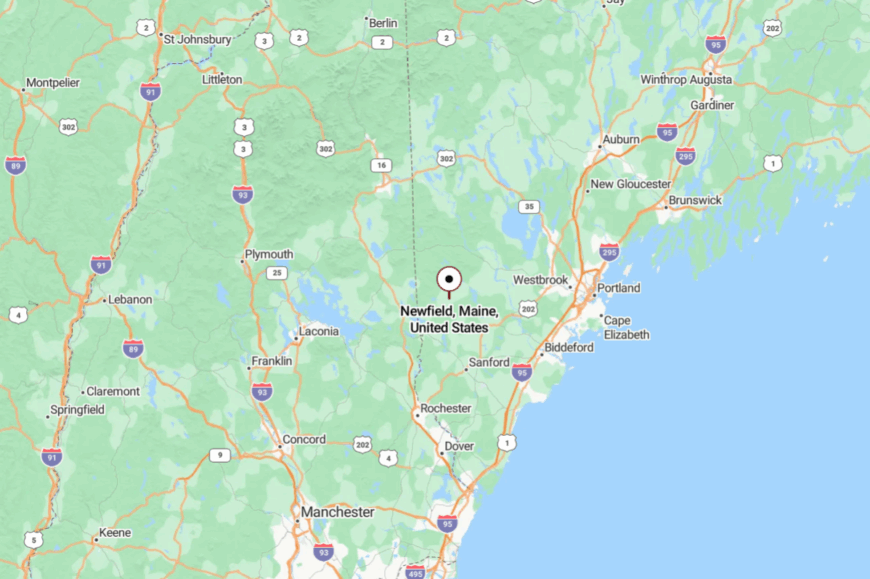
Newfield rests in western York County, about 40 miles west of Portland and near the New Hampshire line. Reach it via ME-11 or ME-110 and a lattice of town roads that slow you to local pace.
There’s no quick cut-through, which is part of its charm. By the time you arrive, the noise you left behind has already faded.
23. Shapleigh – Lakes, Ledges, and Pine-Scented Air
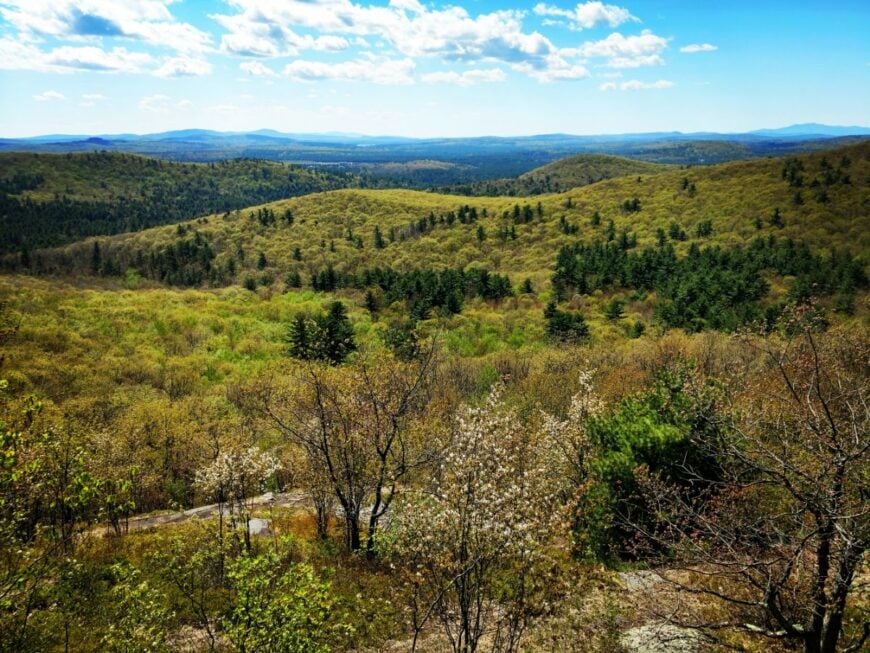
Shapleigh is a scatter of lakes and ridges where classic camps sit back from the water under white pines. The town feels unhurried: kayaks skimming dawn mist on Mousam Lake, a lone loon call, and the scent of pitch warming on sun-baked needles.
Its seclusion comes from larger lot sizes, shoreline dead-ends, and a lack of big-box corridors. Swim at the town beach, amble granite ledges in Shapleigh Town Forest, or follow backroads to tiny diners with homemade pie.
Seasonal camps, small trades, and recreation tourism quietly keep things going. After dark, stars crowd the sky with little light to contest them. Shapleigh is the kind of place that asks you to breathe slower.
Where is Shapleigh?
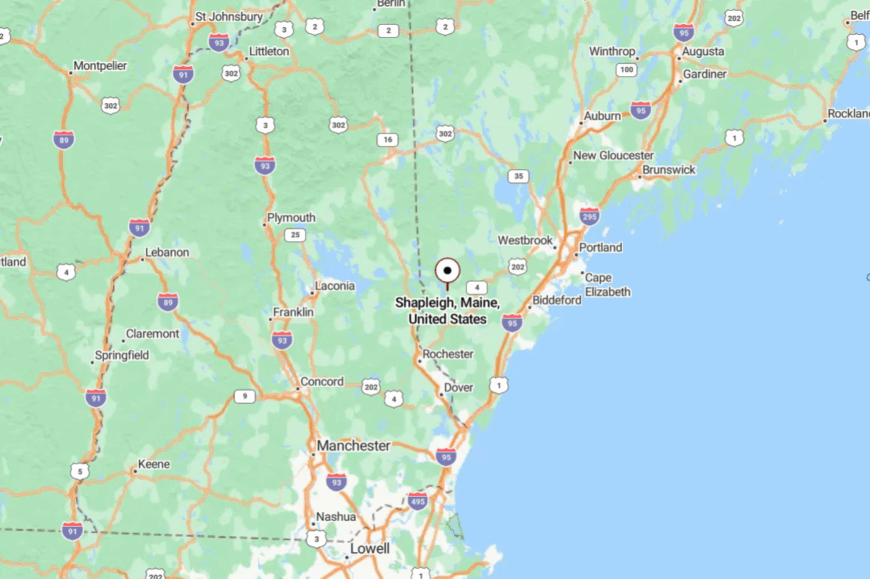
Set in western York County, Shapleigh lies roughly 40 miles west of Portland and 20 miles north of Sanford. Most approaches use ME-11 or ME-109 before narrowing to local roads around the lakes.
Shoreline cul-de-sacs mean you often backtrack the way you came. It’s reachable, but shaped to keep passing traffic away.
22. Acton – Borderland Ridges and Quiet Coves
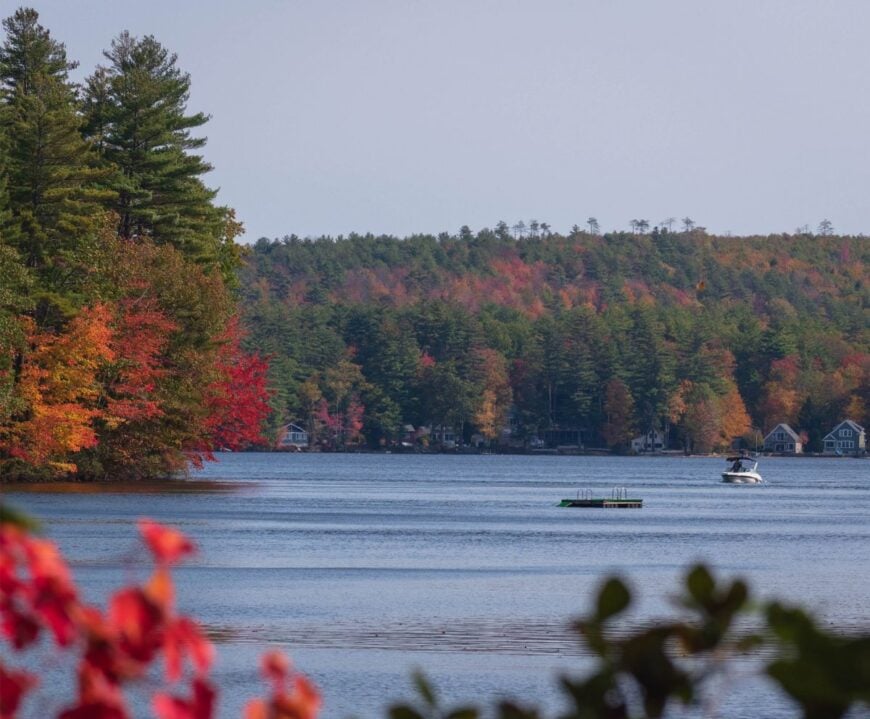
Acton sprawls across borderland hills where blueberry barrens and pine stands meet kettle-clear lakes. The vibe is camp-country calm: fishing lines at sunrise, screen doors thumping, and ospreys circling above coves.
Seclusion stems from its far-west corner location and a maze of shoreline lanes that end in trees or water. Fish Great East Lake, stroll the Mary Grant Nature Preserve, hunt for antiques in weathered barns, or follow dirt tracks to hidden overlooks.
Many residents patch together livelihoods from trades, guiding, and seasonal rentals. The evening chorus of peepers takes over as soon as the wind drops. Acton feels like the last turn you were meant to take.
Where is Acton?

Perched in far-western York County on the New Hampshire line, Acton is about 45 miles from Portland. ME-109 and ME-25 deliver you near, but the final miles unravel into narrow, curving camp roads.
With no interstate nearby, trips here are deliberately unhurried. The ridges and lakes make sure you linger.
21. Limington – River Bluffs and Farmstead Calm

Limington spreads out along the Saco River’s upper bends, a landscape of sandy bluffs, hayfields, and oak groves. The town feels quietly industrious—tractors in spring, sugaring in late winter, hay wagons by midsummer. Its tucked-away feel comes from distance to the coast’s bustle and a reliance on two-lane routes.
Paddle calm river stretches, hike Sawyer Mountain Highlands, stop for ice cream at a roadside stand, or comb backroads for historic cemeteries. Small farms and trades anchor local life, with errands kept to neighboring villages.
On warm nights, lightning bugs hover over the fields like tiny lanterns. Limington whispers rather than announces itself.
Where is Limington?

In northwestern York County, Limington sits about 25 miles northwest of Portland. ME-11 and ME-25 reach it, then country lanes handle the rest.
Without major highways, the approach keeps speeds down and scenery up. You arrive slower—and somehow lighter.
20. Waterboro – Pine Barrens, Quiet Ponds, and Long Drives
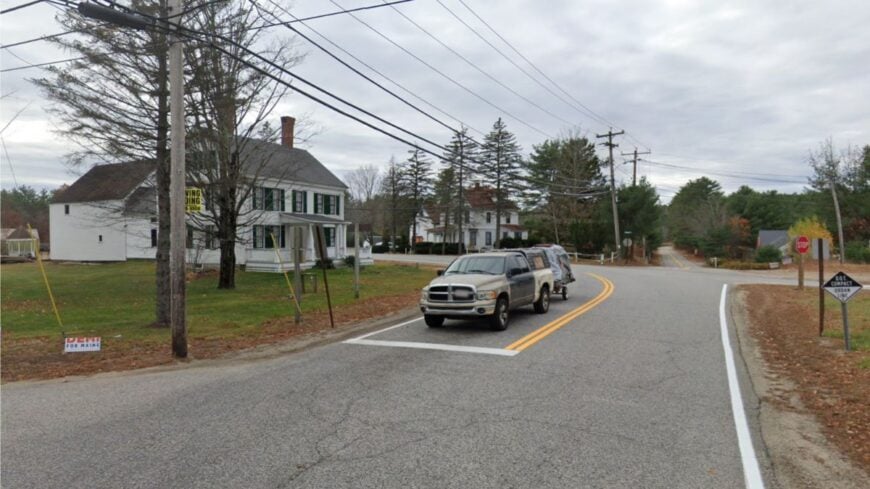
Waterboro is a big town that still feels small, stitched together by lakes, sandy soils, and miles of pine barrens. The vibe is family-rural: campfires in shoulder seasons, kids on dirt bikes, and loons echoing across Little Ossipee Lake.
Seclusion comes from widely spaced neighborhoods and roads that prefer wandering to cutting straight lines. Swim at Friendship Park, launch a kayak at dawn, hike the Waterboro Barrens, or poke around old cellar holes off gravel lanes. Many work in trades or commute, but life tends to bend around the water.
When the wind dies, the lakes hold the day’s last light a beat longer. Waterboro keeps the world at the edge of the trees.
Where is Waterboro?
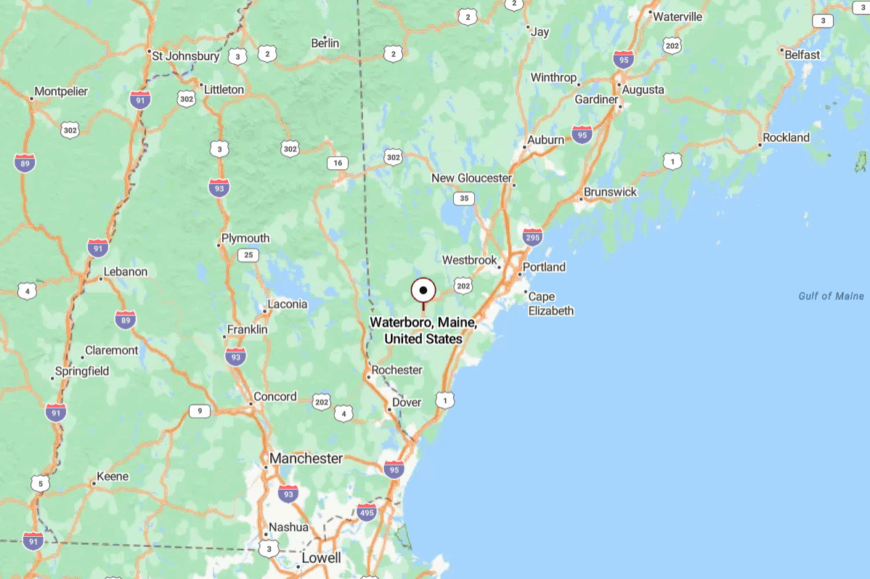
Centrally placed in York County, Waterboro lies about 30 miles west of Portland and north of Sanford. ME-202 and ME-5 bring you close before the local roads thread between ponds.
There’s no quick bypass; the map meanders like the shorelines. That gentle detour is why it stays quiet.
19. Lyman – Farm Ponds and Maple Shade

Lyman feels like a series of glades stitched together by stone walls and gravel roads, where white farmhouses peek from sugar maples. The town’s seclusion comes from its lack of a dense center and a habit of tucking homes behind hedgerows and woodlots.
Walk low-traffic lanes, fish at Bunganut Pond, browse seasonal farm stands, or wander old cemeteries under towering oaks. Small agriculture and trades keep a steady rhythm while bigger errands happen in nearby Biddeford or Sanford.
Evenings bring the smell of cut hay and woodsmoke. Lyman is the sort of quiet that lingers on your clothes.
Where is Lyman?

Set in south-central York County, Lyman is roughly 25 miles southwest of Portland and west of Biddeford. Arrive via ME-35 or ME-111 and then slip onto town roads that dodge between ponds and fields.
There’s no reason for heavy traffic to pass through. The landscape itself asks for a slower gear.
18. Alfred – Shire Town with a Country Heart
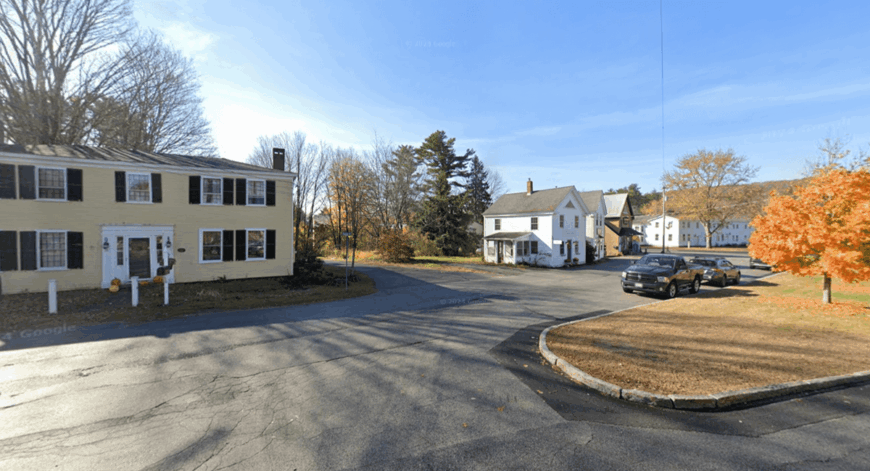
Alfred may be the county seat, but it carries itself like a village pressed between ponds and hemlock shade. Its seclusion is more about tone than distance: early-closing shops, courthouse lawns, and footpaths where you’ll meet a neighbor before a stranger.
Visit the historic district, circle Shaker Pond on foot, birdwatch in nearby marshes, or sip coffee on a bench facing the green. County offices, small retail, and services keep things ticking without hurry.
Night falls softly here, and the village lamps feel like stars that decided to stay. Alfred is proof that a central place can still be quiet.
Where is Alfred?
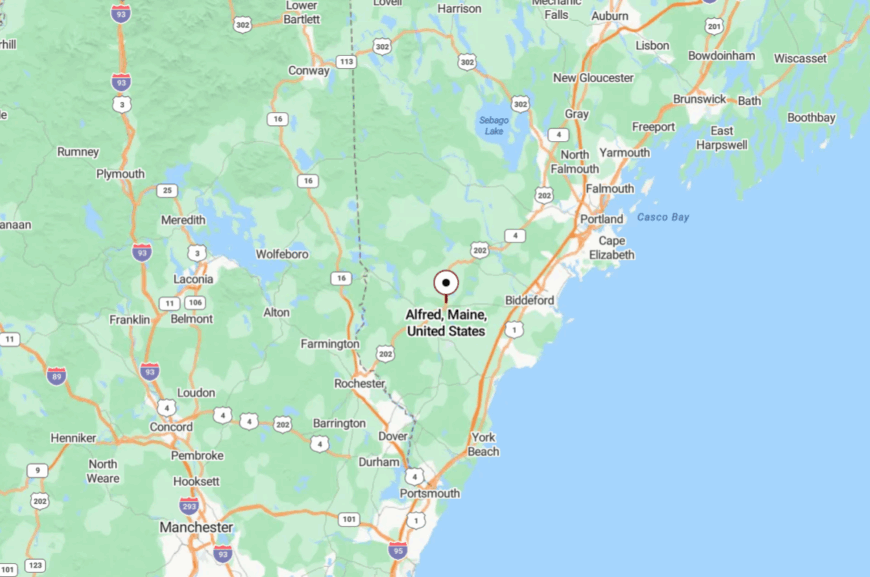
In south-central York County, Alfred sits about 30 miles southwest of Portland and just northwest of Sanford. It’s reached by ME-111 or U.S.-202, both two-lane routes that never feel rushed.
Side streets quickly give way to ponds and pasture. It’s easy to reach—and easy to exhale.
17. Lebanon – Borderland Woods and Sandplain Roads
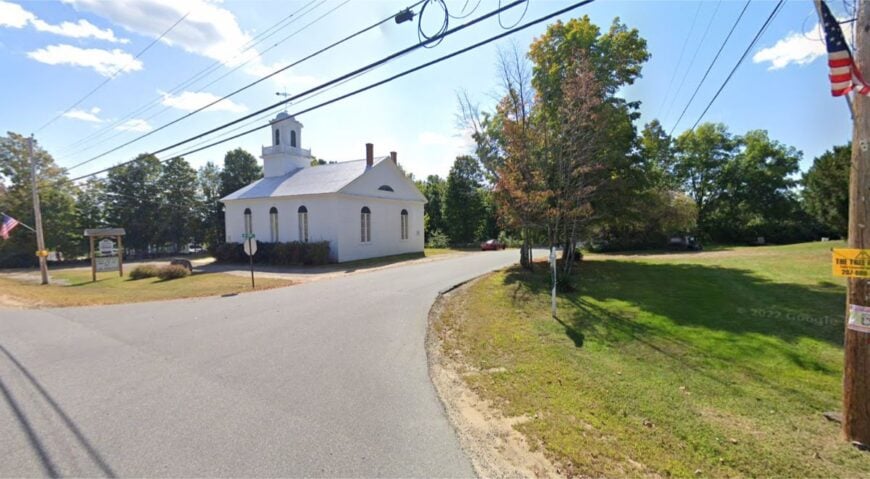
Lebanon stretches along the state line in a patchwork of pine woods, old airfields, and sandy backroads that end in silence. The vibe is classic rural: workshops humming, dogs asleep on porches, and big night skies cleaved by owl calls.
Seclusion comes from its edge-of-the-map position and long drives to anything resembling a city center. Explore the Salmon Falls River corridor, paddle small ponds, wander dirt lanes to historic cemeteries, or time a visit for foliage loops.
Work here leans toward trades and commuting, but evenings belong to the crickets. Lebanon keeps its distance—and its peace.
Where is Lebanon?
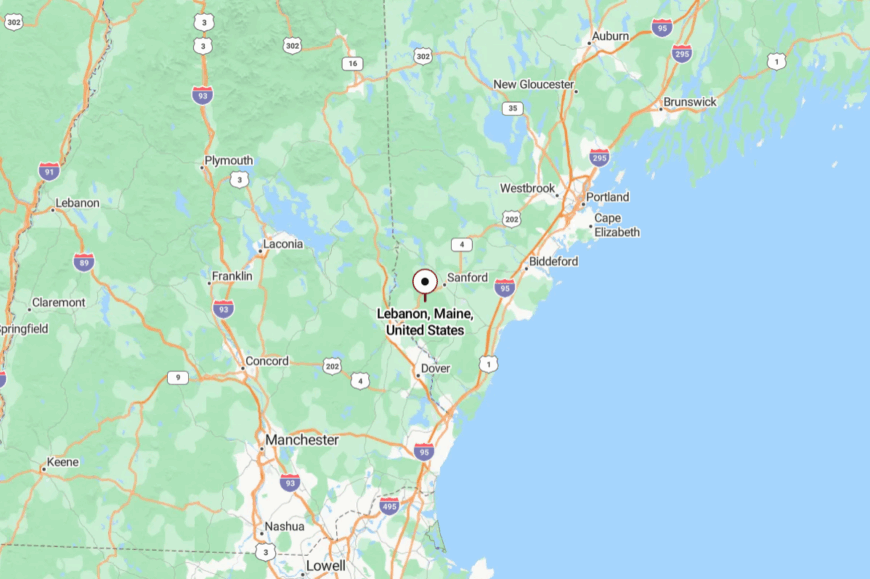
Anchored in far southwestern York County on the New Hampshire border, Lebanon is about 40 miles from Portland. U.S.-202 and ME-11/ME-125 lead in, then the road net thins to camp and farm lanes.
There’s no interstate shortcut. The border woods do the rest of the quieting.
16. Hollis – Saco River Bends and Hemlock Shade
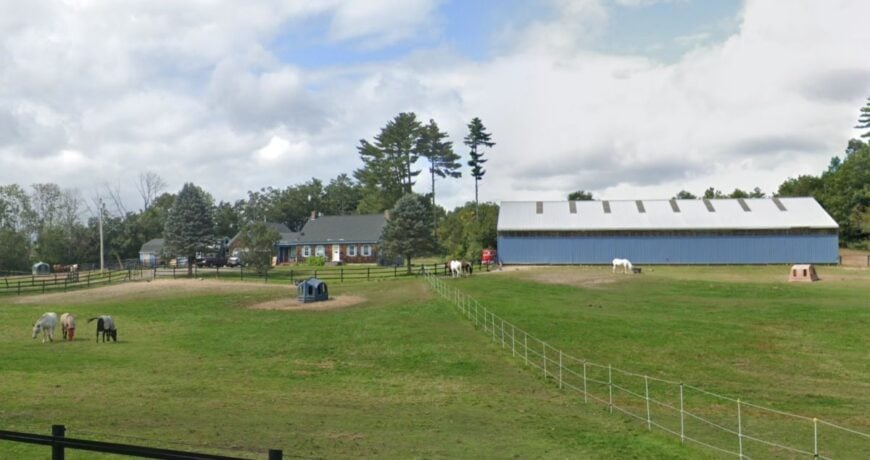
Hollis rides the curves of the Saco River, a place of sandy banks, granite ledges, and neighborhoods tucked back from view. It feels woodsy and neighborly, with small farmstands, trailheads, and porches that catch the last light.
Seclusion comes from river meanders and a lack of big retail corridors that would pull traffic through. Wade at Indian Cellar Preserve, fish evening eddies, walk quiet dirt lanes, or detour to a sugarhouse in late winter.
Many commute to Biddeford or Portland, but the town keeps a slower home temperature. At dusk, the river hum is louder than the roads. Hollis holds its calm in the bends.
Where is Hollis?
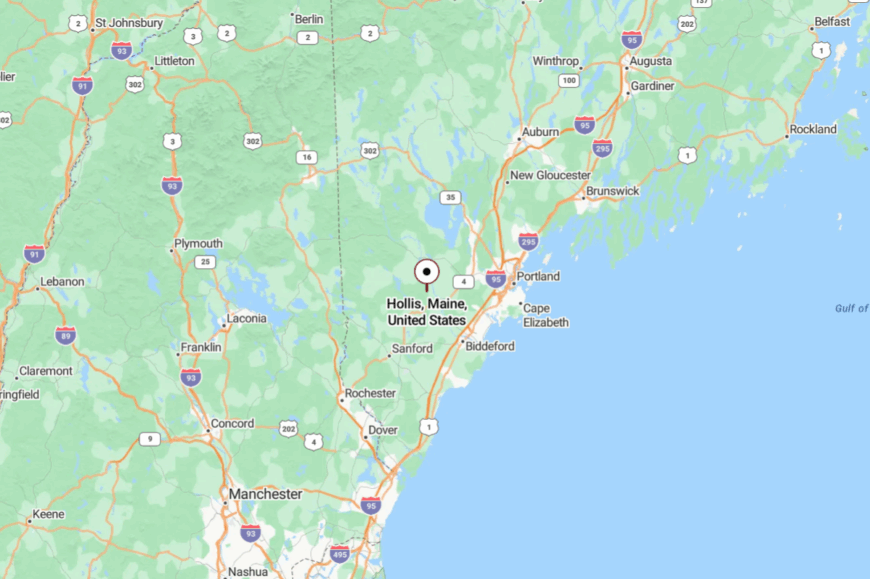
In eastern York County, Hollis sits about 20 miles west of Portland and just north of Buxton. ME-35 and U.S.-202 reach the area, then river roads wander where the Saco allows. There’s no straight-line route across the water. The curves are the point.
15. Buxton – Granite Foundations and Garden Quiet
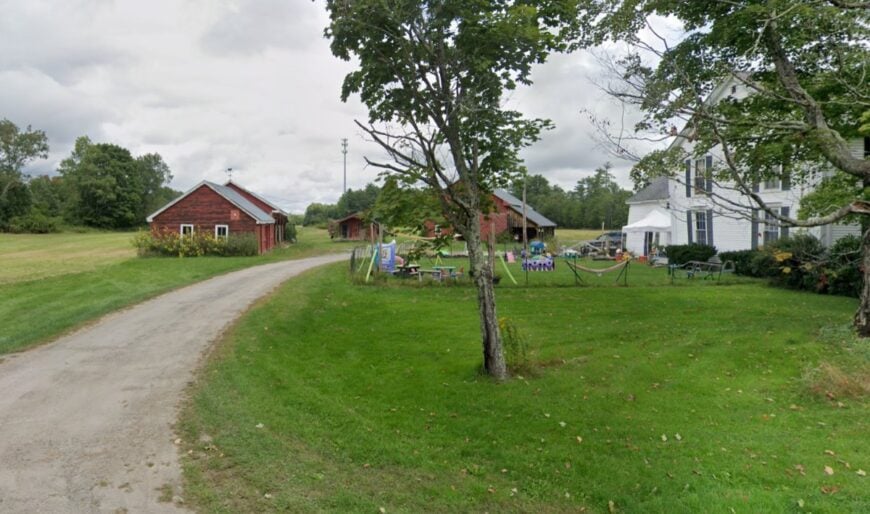
Buxton is a spread of villages—Groveville, Salmon Falls, and more—stitched by gardened yards and granite foundations. The mood is neighborly, steady, and just a little stubborn in the best New England way.
Seclusion arrives by way of local roads and a habit of ending streets at rivers, woods, or old mill sites. Stroll Pleasant Point Park, fish below the dam, visit pocket cemeteries under birch and oak, or scout farmstands along back lanes. Trades, small shops, and commuting define the economy without hurrying the day.
Night brings cricket choirs and porch talk. Buxton feels like several small towns holding hands.
Where is Buxton?
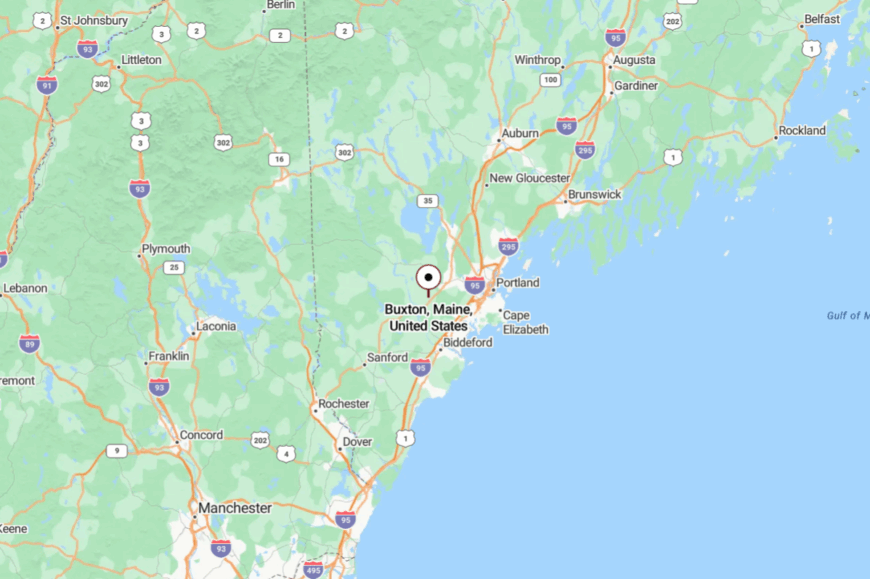
Located in eastern York County, Buxton is roughly 15–20 miles west of Portland. ME-22 and ME-112 connect you, then town ways do the weaving.
With the Saco River and old mill sites interrupting shortcuts, driving stays local. It’s close to everything and somehow far from it, too.
14. Dayton – River Flats and Long Horizons

Dayton averages more meadow than main street, its farm fields rolling toward the Saco and its homes set well back from the road. The vibe is sun-bleached and simple: tractors at noon, screen doors in the evening, and a sky that looms kindly.
Seclusion comes from small size, big lots, and no appetite for commercial sprawl. Walk along the river, bike quiet loops, pick berries at a local farm, or watch storms muscle across the horizon in summer.
Farming and trades keep the lights on, and not much else is necessary. Dayton feels like a deep breath you didn’t know you needed.
Where is Dayton?

Dayton sits in eastern York County, about 20 miles southwest of Portland and northwest of Saco. U.S.-202 and ME-35 skirt the edges before town roads slide into fields. There’s no central strip to draw traffic. The meadows handle the welcome.
13. Berwick – Mill Bones and Backstreet Stillness

Berwick is one of Maine’s oldest towns, incorporated in the early 18th century and rooted along the Salmon Falls River. The river shaped its development, powering sawmills, tanneries, and small industries that gave the village its brick-built center and compact street plan.
The presence of mills set Berwick apart from nearby inland towns, and its identity remains tied to the waterway that links it to Somersworth, New Hampshire, just across the river. While the era of heavy industry has passed, the layout and architecture still reflect that heritage.
Today Berwick’s center remains modest but carries a distinct mill-town character. It has an edge of industriousness in its bones, contrasting with the more residential feel of its offshoots, making it a place where history is most visible in stone, brick, and riverbanks.
Where is Berwick?
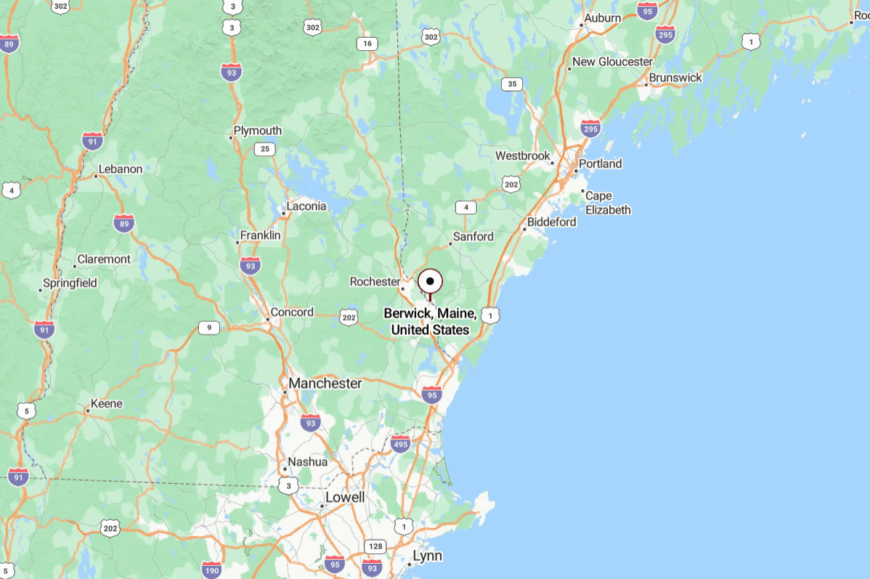
In southern York County on the New Hampshire border, Berwick is about 20 miles northwest of Portsmouth, NH, and 40 miles south of Portland. ME-9 and ME-236 bring you in; local streets do the quieting.
There’s no interstate exit to tempt speed. River and woods keep it pocketed.
12. North Berwick – Village Greens and Dooryard Gardens
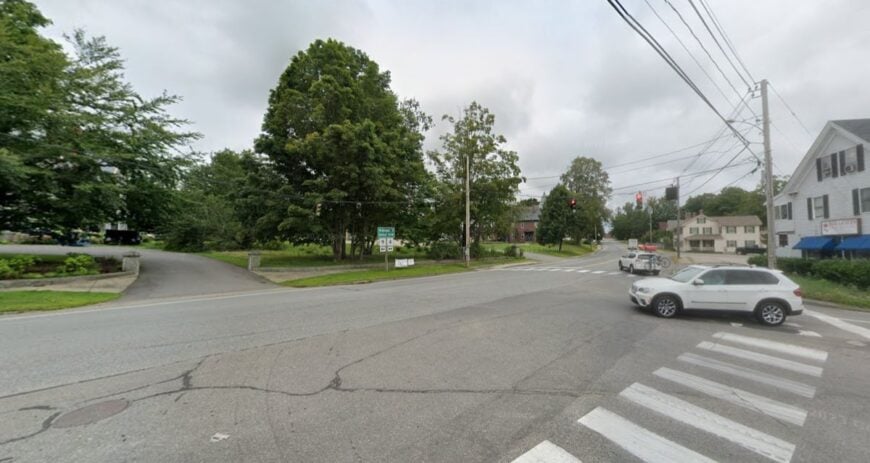
North Berwick broke away from Berwick in the early 19th century and developed a different sense of place. Instead of mills on a border river, it gathered around a village green, schools, and homes that spill outward into farm fields and wooded hills. The town center feels less industrial and more anchored in everyday rural life.
Its defining landmark is the old woolen mill on the Great Works River, once a hub of production and now a preserved brick presence at the edge of town. Alongside this history, the local economy grew with manufacturing companies and light industry, balanced by a strong tradition of agriculture and small homesteads.
The town’s atmosphere remains distinct from its parent. Where Berwick carries the feel of a river mill town, North Berwick leans toward homesteads, hillside farms, and green-centered community life. The separation is subtle but unmistakable when you move between the two.
Where is North Berwick?

Set in southern York County, North Berwick sits about 15 miles inland from the coast and 35 miles southwest of Portland. Access comes via ME-4 and ME-9 before narrowing to neighborhood streets.
There’s no direct interstate pull, which keeps pass-through traffic low. It’s close enough to everything, yet it feels like its own room.
11. Eliot – Tidal Backroads and Porch-Light Evenings
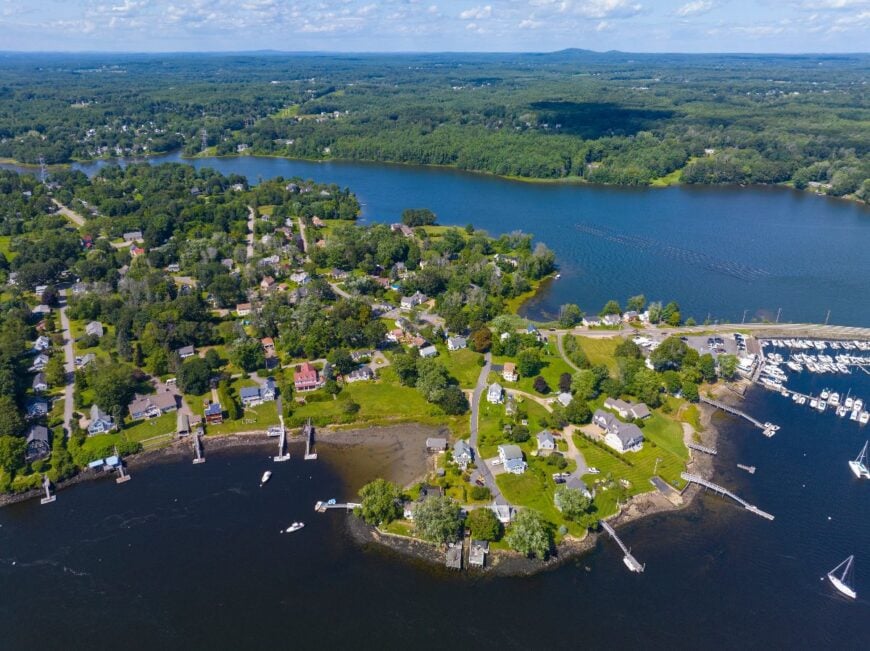
Eliot edges the Piscataqua with salt air drifting up tidal creeks and neighborhoods tucked behind stone walls. Despite being near the coast, it feels sheltered—more porches and farmstands than storefronts and neon.
Seclusion comes from winding lanes that follow the marsh and the river rather than any grid. Kayak calm coves at high tide, walk the town forest, linger at a farmstand for late tomatoes, or pedal sunrise loops past weathered capes.
Many commute to Kittery or Portsmouth, but evenings belong to whip-poor-wills and porch light. Eliot is the quiet side of the seacoast, hiding in plain sight.
Where is Eliot?
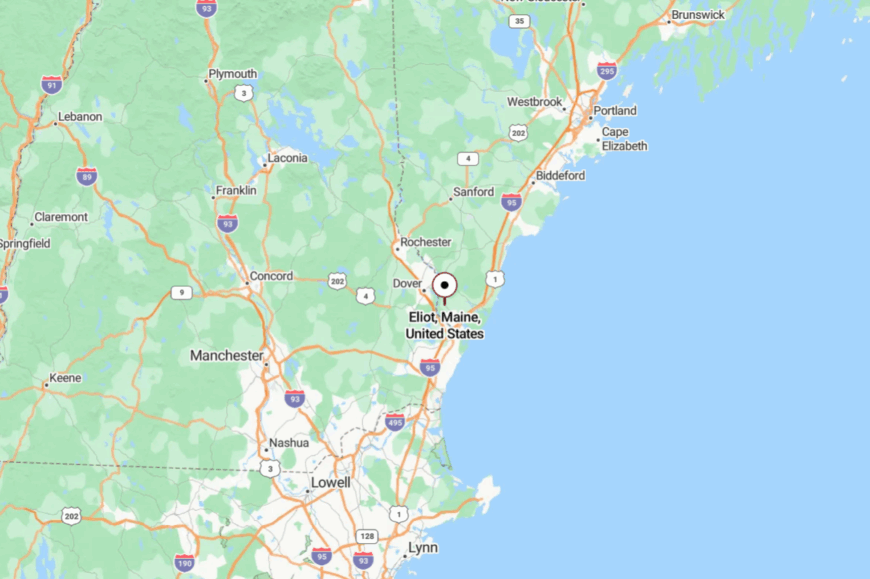
In far southern York County, Eliot sits just north of Kittery and across the river from Portsmouth, NH—about 50 miles south of Portland. U.S.-236 and local lanes thread through fields and along tidal creeks to reach it.
Interstates skirt nearby but don’t slice the town open. It’s close enough to touch the coast, but far enough to hear the night.
10. Cornish: Quaint Village Life Off the Beaten Path

Cornish, with its approximate population of 1,400, is a delightful village that feels like stepping back in time. I love strolling through its historic district, where antique shops and local eateries line the charming streets.
The town is known for its apple orchards and farming community, reflecting its roots in agriculture. What makes Cornish truly secluded is its location away from major highways, offering large properties that provide plenty of privacy.
The peaceful atmosphere here is palpable, far removed from the noise and hurry of city life. If you’re seeking a place where the pace is slow and the community is welcoming, Cornish might just be your perfect retreat.
Where is Cornish?

Situated in York County, Cornish is nestled in the foothills of the White Mountains, offering scenic views in every direction. Its seclusion comes from being off the beaten path, with the nearest city, Portland, about an hour’s drive away.
Getting here involves a leisurely drive through winding country roads, which to me only adds to the charm of this hidden gem. The town’s location ensures that it remains a quiet haven, ideal for those looking to escape the hustle and bustle.
9. Denmark: Forested Corners with Quiet Lanes

Denmark is a tranquil town of about 1,100 residents that immediately captivated me with its serene environment. Nestled among dense forests, homes here are often tucked away behind groves of trees, offering unmatched privacy.
Outdoor enthusiasts can enjoy kayaking on Moose Pond or hiking trails that weave through the woods. The town’s economy is modest, with small businesses and a focus on outdoor recreation.
Denmark’s secluded nature is enhanced by its quiet lanes and minimal traffic, making it a peaceful escape. If you value solitude and a deep connection with nature, Denmark provides a perfect setting.
Where is Denmark?

Located in Oxford County, Denmark sits near the New Hampshire border, surrounded by lakes and forests. Its seclusion is attributed to the vast woodlands that encircle the town, creating natural barriers from the outside world.
To get here, I often take Route 117, which winds through picturesque landscapes before arriving at this quiet enclave. The town’s remote setting ensures that it remains a serene getaway, far from the noise of larger towns and cities.
8. Waterford: Peaceful Valleys and Open Spaces

Waterford, with a population hovering around 1,500, embodies the essence of a peaceful country lifestyle. I am always struck by its rolling valleys and open fields that stretch as far as the eye can see.
This town offers outdoor activities like fishing in Bear Pond and hiking on Mount Tire’m. Agriculture plays a significant role here, with farms dotting the landscape and contributing to the local economy.
Waterford’s seclusion stems from its sparse population and expansive properties, ensuring plenty of space between neighbors. For anyone craving tranquility and wide-open spaces, Waterford is a dream come true.
Where is Waterford?

Nestled in Oxford County, Waterford is located northwest of Lewiston and Auburn. Its remote setting is due to the minimal development in the area, preserving its natural beauty and solitude.
Getting to Waterford involves leisurely drives along scenic routes like Route 35, which I find to be part of the charm. The town’s isolation provides a quiet haven, perfect for unwinding and reconnecting with nature.
7. Sebago: Hidden Shores and Forested Seclusion

Sebago, home to about 1,700 residents, is a town that offers more than meets the eye. While many flock to Sebago Lake for recreation, I’ve discovered that the town itself harbors secluded areas perfect for a peaceful retreat.
The large wooded lots provide privacy, and some even grant access to lesser-known shores of the lake. The local economy revolves around small businesses and tourism, though in the more hidden parts of town, it’s all about enjoying nature.
What makes Sebago secluded is its pockets of tranquility away from the main tourist spots, where you can enjoy the pristine environment undisturbed. If you’re like me and prefer the quiet side of popular destinations, Sebago’s hidden corners are worth exploring.
Where is Sebago?

Located in Cumberland County, Sebago sits on the western shore of Sebago Lake, but away from the more developed areas. Its seclusion is maintained by the dense forests and absence of major roads passing through its quieter sections.
I usually take Route 114 to reach these peaceful enclaves, enjoying the transition from bustling towns to serene woodlands. Sebago’s location offers the best of both worlds: access to recreational activities and the serenity of secluded living.
6. Baldwin: Rural Retreat with Majestic Mountain Views

Baldwin is a rural town with around 1,500 residents, and it instantly won me over with its majestic mountain views. The properties here are expansive, often stretching over several acres, which means plenty of room to breathe.
Outdoor activities include hiking on nearby trails and enjoying the panoramic vistas of the surrounding hills. The local economy is primarily agricultural, with farms and orchards contributing to the town’s rustic charm.
Baldwin’s seclusion comes from its low population density and the natural barriers provided by the rugged terrain. For those seeking isolation without sacrificing stunning scenery, Baldwin is an ideal choice.
Where is Baldwin?

Situated in Cumberland County, Baldwin lies at the foothills of the Saddleback Hills, adding to its remote feel. The town’s seclusion is enhanced by its distance from major urban centers and the winding roads that lead here.
I often find myself taking Route 113, which offers a picturesque drive into Baldwin’s heart. The journey itself feels like an escape, culminating in a peaceful retreat where the mountains meet the sky.
5. Hiram: Riverside Solitude Away from the Crowds

Hiram, with its population of around 1,600, is a quietly enchanting town along the banks of the Saco River. I enjoy the peacefulness of this place, where you can spend days fishing, kayaking, or simply watching the river flow by.
The town doesn’t have much in the way of industry, which keeps it serene and largely undisturbed. The low housing density means that homes are spread out, often surrounded by forests or fields.
Hiram’s seclusion is due in part to its natural landscapes and lack of commercial development. It’s a perfect spot for anyone looking to immerse themselves in nature and enjoy riverside solitude.
Where is Hiram?

Located in Oxford County, Hiram is tucked away in a corner of Southwest Maine, accessible via Route 117 and Route 160. The town’s remoteness is enhanced by the meandering Saco River and the surrounding hills that shield it from bustling areas.
Getting here is a scenic drive that I find both calming and invigorating, passing through charming countryside. Hiram’s location ensures that it remains a quiet haven, far removed from crowded tourist destinations.
4. Parsonsfield: Historic Charm with Ample Privacy

Parsonsfield, with its approximate population of 1,900, is a town that beautifully blends history and seclusion. I’ve always admired its well-preserved historic buildings, including old farmhouses and the Parsonsfield Seminary.
The town is surrounded by forests and farmlands, offering plenty of space and privacy for residents. Agriculture remains a key part of the local economy, which adds to its rustic appeal.
What makes Parsonsfield secluded is the generous lot sizes and the natural barriers provided by the surrounding landscapes. For history buffs like me who also seek solitude, Parsonsfield offers a unique and peaceful living experience.
Where is Parsonsfield?

Located on the border of York and Oxford Counties, Parsonsfield is off the main tourist trails, enhancing its quiet charm. Its seclusion is due to its rural setting and the lack of major thoroughfares passing through town.
I usually take Route 160 to reach Parsonsfield, enjoying the drive through rolling hills and woodlands. The town’s location makes it a serene escape where one can appreciate both history and nature away from the crowds.
3. Stoneham: Seclusion in the Heart of Wilderness

Stoneham is a tiny town with a population of just about 250, and it’s one of the most secluded places I’ve ever visited. Nestled within the boundaries of the White Mountain National Forest, it offers unparalleled access to wilderness and natural beauty.
Activities here are all about the outdoors: hiking, wildlife watching, and exploring untouched forests. There’s no significant industry in Stoneham, which keeps the environment pristine and the pace of life slow.
The seclusion comes from its remote location and the vast national forest that envelops it. If you’re yearning for a spot where you can truly disconnect and immerse yourself in nature, Stoneham is the place to be.
Where is Stoneham?

Located in Oxford County, Stoneham is tucked away in the western mountains of Maine, close to the New Hampshire border. Its remote setting is due to being surrounded by protected forest lands, limiting development and access.
Getting there involves traveling along Route 5, a journey that takes you deeper into the wilderness, which I find both exciting and calming. Stoneham’s isolation ensures a private retreat, far from the bustle of modern life.
2. Sweden: Quiet Countryside Living Amidst Rolling Hills

Sweden is a peaceful town with a population of about 400, offering a quintessential countryside living experience. I was immediately drawn to its rolling hills and vast open spaces adorned with picturesque farms and homesteads.
Outdoor activities include exploring the nearby waterways and trails, perfect for anyone who loves nature. The town’s economy is modest, with a focus on agriculture and small-scale businesses.
Sweden’s seclusion is enhanced by large acreages and the natural barriers created by the surrounding hills and forests. For those seeking a tranquil escape into rural Maine, Sweden provides an idyllic setting.
Where is Sweden?

Situated in Oxford County, Sweden is off the main roads, contributing to its quiet atmosphere. Its seclusion stems from both its small population and its location amidst expansive natural landscapes.
I usually reach Sweden via Route 93, enjoying the serene drive through the countryside. The town’s remote setting makes it a peaceful haven where one can truly relax and unwind.
1. Lovell: A Lakeside Haven Nestled in the Mountains

Lovell, with its population of around 1,100, is my favorite secluded town in Southwest Maine. Nestled between the mountains and lakes, it offers a perfect blend of natural beauty and tranquility.
I love spending time on Kezar Lake, one of the town’s crown jewels, where you can boat, swim, or simply enjoy the stunning views. The local economy revolves around small businesses, tourism, and a bit of agriculture, all of which maintain the town’s peaceful vibe.
Lovell’s seclusion comes from its expansive forests, serene lakes, and spacious properties that provide ample privacy. If you’re seeking a lakeside haven tucked away from the hustle and bustle, Lovell is an absolute gem.
Where is Lovell?

Located in Oxford County, Lovell is set against the backdrop of the White Mountains, enhancing its secluded feel. The town’s remoteness is due to its mountainous terrain and lack of major highways passing through.
I usually access Lovell via Route 5, and each time, the drive feels like an escape into a peaceful sanctuary. With its pristine environment and serene atmosphere, Lovell truly embodies the essence of secluded living in Maine.






